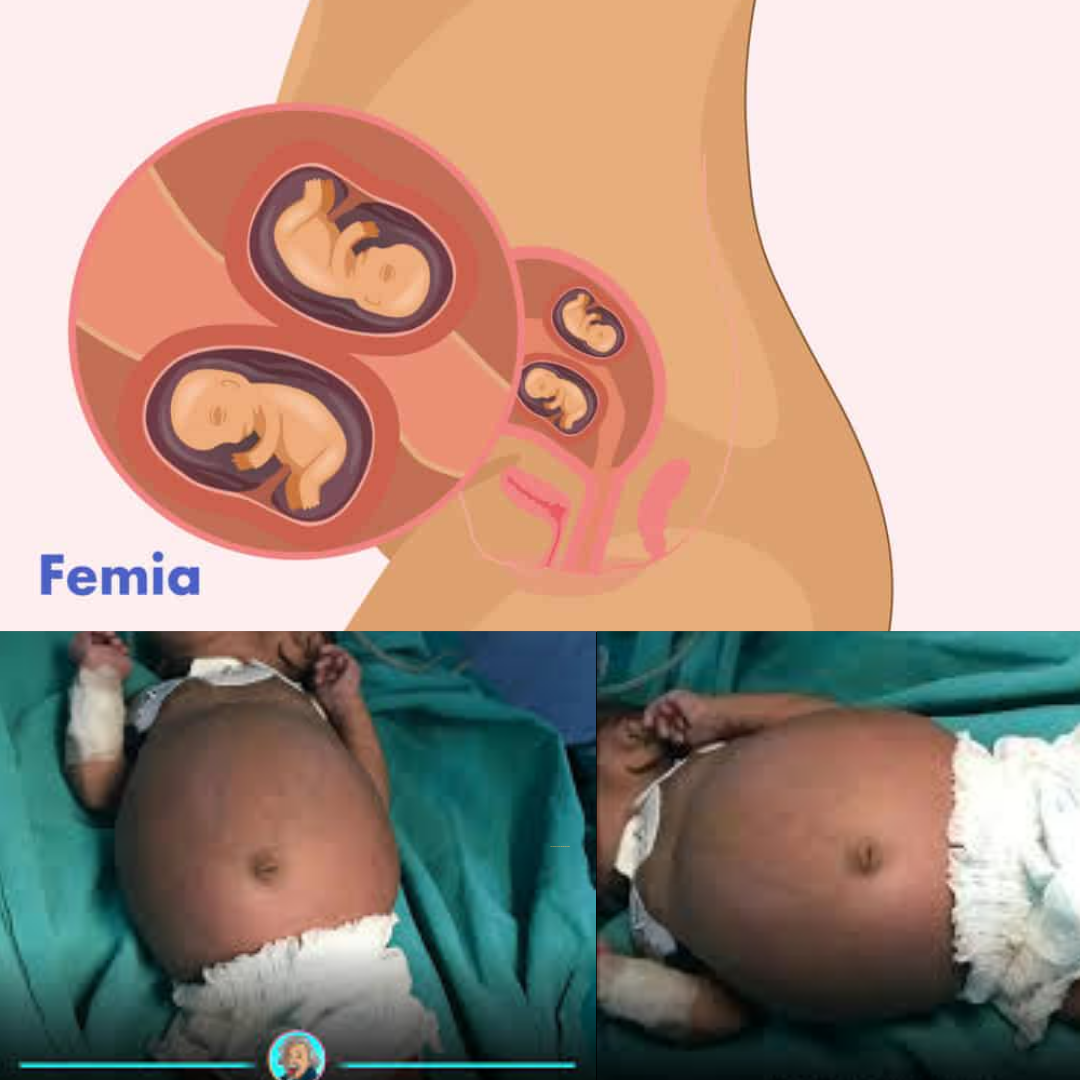Colombia, February 2025 – In an extremely rare and shocking case, a baby girl was born with her own twin growing inside her body. This unusual medical condition is known as Fetus in Fetu (FIF), and it occurs in about 1 in 5 lakh (500,000) births worldwide. Thanks to timely medical attention and successful surgery, the baby girl is now recovering well after doctors removed the parasitic twin.
What Happened?
Doctors in Colombia discovered during a late-stage pregnancy scan that the unborn baby had something unusual inside her abdomen. At 35 weeks, a 3D/4D ultrasound revealed a small mass growing inside the baby. Further tests confirmed that it was not a tumor or cyst—but her own twin.
To avoid any damage during normal delivery, the medical team decided to perform a cesarean section. After birth, the newborn underwent laparoscopic surgery, and doctors successfully removed the twin from her abdomen. The twin was around 2 inches long and did not have important organs like a brain or heart.
What Is Fetus in Fetu?
Fetus in Fetu is a rare condition where one twin absorbs the other during early stages of pregnancy. Instead of growing separately, one twin begins to develop inside the other’s body. In most cases, this parasitic twin does not survive independently, but it keeps growing slowly inside the healthy baby.
Medical experts believe that this happens when identical twins, which start as one fertilized egg, don’t split properly during the first few days after conception. If the split happens late or unevenly, one part can get trapped inside the other.
How Does the Absorbed Twin Grow?
Inside the host baby’s body, the parasitic twin can attach to blood vessels and get nutrients. That’s how it keeps growing. Since the body sees it as part of itself, there’s no rejection or immune response. Over time, it may form bones, tissues, or even body-like shapes. However, in most cases, it doesn’t have vital organs like the brain or heart.
In this recent case, the twin did not have a functioning body, but still managed to grow inside the baby’s abdomen.
How Rare Is This Condition?
Only about 100 such cases have been documented worldwide. Most are found during childhood when the host child experiences pain, swelling, or digestive issues. Sometimes, people live with this condition for years without knowing it.
In one extreme case from 2008, a baby was born with 11 parasitic fetuses inside its abdomen. Unfortunately, that child did not survive due to the complexity of the condition. Such cases highlight how mysterious and rare this phenomenon is.
What’s the Difference Between Fetus in Fetu and Teratoma?
Doctors often confuse FIF with another condition called teratoma. Both involve unusual tissue growths, but the key difference is in structure. Fetus in fetu usually has some organized body parts like a spine, hands, or legs. A teratoma, on the other hand, is more like a random lump of growing tissues and doesn’t form an actual fetus shape.
Some scientists even believe that both conditions may be related or are part of the same developmental mistake, but this is still being researched.
Why Early Detection Is Important
With modern technology like high-resolution ultrasounds and 4D imaging, rare conditions like fetus in fetu can now be detected before birth. This helps doctors plan safe deliveries and immediate surgeries, reducing risks for both mother and child.
In the Colombia case, early diagnosis played a big role in saving the baby’s life and ensuring her healthy future.
Expert Opinion
Dr. Ramesh Nair, a fetal medicine specialist from India, says, “Fetus in fetu is extremely rare, but not impossible. With better scanning technology and increased awareness among doctors, we might detect more such cases in the future. The good news is, if treated properly, the child can live a completely normal life.”
Conclusion
This rare case of a baby being born with her own twin growing inside her reminds us how complex and mysterious human development can be. Thanks to advanced medical care and timely action, the baby girl from Colombia is now safe and healthy. As science and prenatal technology improve, we may discover more about such extraordinary cases and ensure better outcomes for similar patients in the future.
FAQs
Q1. What is fetus in fetu?
It is a rare condition where a twin grows inside the body of its sibling due to abnormal development during early pregnancy.
Q2. How is it different from a tumor or teratoma?
Unlike tumors, fetus in fetu has some organized body parts and resembles a tiny fetus. Teratomas are irregular tissue growths without a proper body structure.
Q3. Is fetus in fetu dangerous?
It can be dangerous if the parasitic twin grows large or presses on important organs. Surgery is usually required.
Q4. Can the baby live a normal life after removal?
Yes, in most cases the baby can live a healthy, normal life after the parasitic twin is safely removed.
Q5. How can this condition be detected?
It is usually detected through advanced prenatal scans like 3D or 4D ultrasounds in the late stages of pregnancy.

